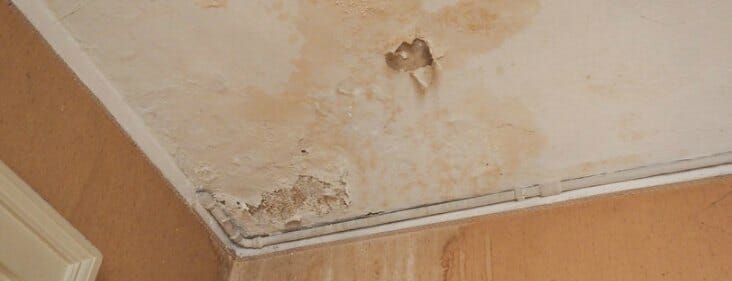The Home's Common Common Triggers of Leakage: In-Depth Analysis
The Home's Common Common Triggers of Leakage: In-Depth Analysis
Blog Article
How do you feel when it comes to How to detect water leaks in your home?

Leakages not just create waste of water but can also trigger unnecessary damages to your house and also advertise undesirable natural development. Water leaks could go undetected given that many of the pipework in our house is hidden. By understanding and looking for daily situations that create leakages, you can safeguard your home from future leakages and unneeded damage. Today, we will certainly take a look at six leakage triggers that may be creating your pipes to drip.
Immediate temperature level changes.
Extreme temperature level adjustments in our pipes can cause them to expand and also get unexpectedly. This expansion and contraction may cause cracks in the pipes, especially if the temperature are below freezing. It would be best if you kept an eye on just how your plumbing functions. The presence of the formerly mentioned conditions often suggests a high risk.
Rusty water systems
As time goes by, your plumbing system ages and rust such as corrosion may start gnawing the pipelines. This might be the root cause of staining or warping on your pipes. This asks for an assessment with your plumber right away. Think about changing the pipelines given that they are at a greater threat of deterioration than the more recent versions if our plumbing system is old.
Malfunctioning Pipeline Joints
Pipe joints can degrade over time, resulting in water leaks. If you have noisy pipelines that make ticking or banging sounds, especially when the warm water is transformed on, your pipe joints are probably under a great deal of stress.
Encroaching roots
Many water leaks begin outside the house instead than inside it. You may discover damp patches or sinkholes in your yard, and also that might suggest that tree roots are invading water lines triggering water to seep out.
Poor Water Connectors
Sometimes, a leak can be triggered by loose pipes and pipes that provide your appliances. Most of the time, changing is what causes the loose water Connections. You could discover in the case of a cleaning maker, a hose might spring a leakage due to drinking throughout the spin cycle. In case of a water connections leak, you may see water running straight from the supply line or pools around your appliances.
Clogged Drains
Blocked drains may be irritating as well as inconveniencing, however they can often wind up creating an overflow bring about break pipelines. Maintain eliminating any type of products that may go down your drains that could obstruct them to stay clear of such aggravations.
All the above are sources of leaks however not all water leaks arise from plumbing leakages; some leaks might originate from roofing leaks. All leaks need to be repaired instantly to stay clear of water damage.
Leaks not just cause waste of water yet can likewise cause unneeded damage to your residence and advertise unwanted natural growth. By recognizing and looking for everyday scenarios that cause leakages, you can safeguard your home from future leakages and also unneeded damages. Today, we will certainly look at six leakage creates that might be creating your pipelines to trickle.
At times, a leakage can be triggered by loose hose pipes as well as pipes that provide your devices. In instance of a water links leak, you may see water running straight from the supply line or puddles around your appliances.
How To Check For Water Leak In Your Home
How To Check for Leaks
The average household's leaks can account for nearly 10,000 gallons of water wasted every year and ten percent of homes have leaks that waste 90 gallons or more per day. Common types of leaks found in the home are worn toilet flappers, dripping faucets, and other leaking valves. These types of leaks are often easy to fix, requiring only a few tools and hardware that can pay for themselves in water savings. Fixing easily corrected household water leaks can save homeowners about 10 percent on their water bills.
To check for leaks in your home, you first need to determine whether you're wasting water and then identify the source of the leak. Here are some tips for finding leaks:
Take a look at your water usage during a colder month, such as January or February. If a family of four exceeds 12,000 gallons per month, there are serious leaks.
Check your water meter before and after a two-hour period when no water is being used. If the meter changes at all, you probably have a leak.
Identify toilet leaks by placing a drop of food coloring in the toilet tank. If any color shows up in the bowl after 10 minutes, you have a leak. (Be sure to flush immediately after the experiment to avoid staining the tank.)
Examine faucet gaskets and pipe fittings for any water on the outside of the pipe to check for surface leaks.
Undetected water leaks can happen without the home or business owner even realizing. If you suspect a water leak, but not able to find the source. It is time to contact a professional water leak detection service, The Leak Doctor.
How To Find a Water Leak In Your Home
https://www.leakdoctor.com/blog/How-To-Check-For-Water-Leak-In-Your-Home_AE197.html

We hope you liked our topic about Most Common Causes of Leaky Pipes. Many thanks for finding the time to browse our short article. Sharing is nice. Helping people is fun. Thanks so much for taking the time to read it.
Pro help, one ring away. Report this page